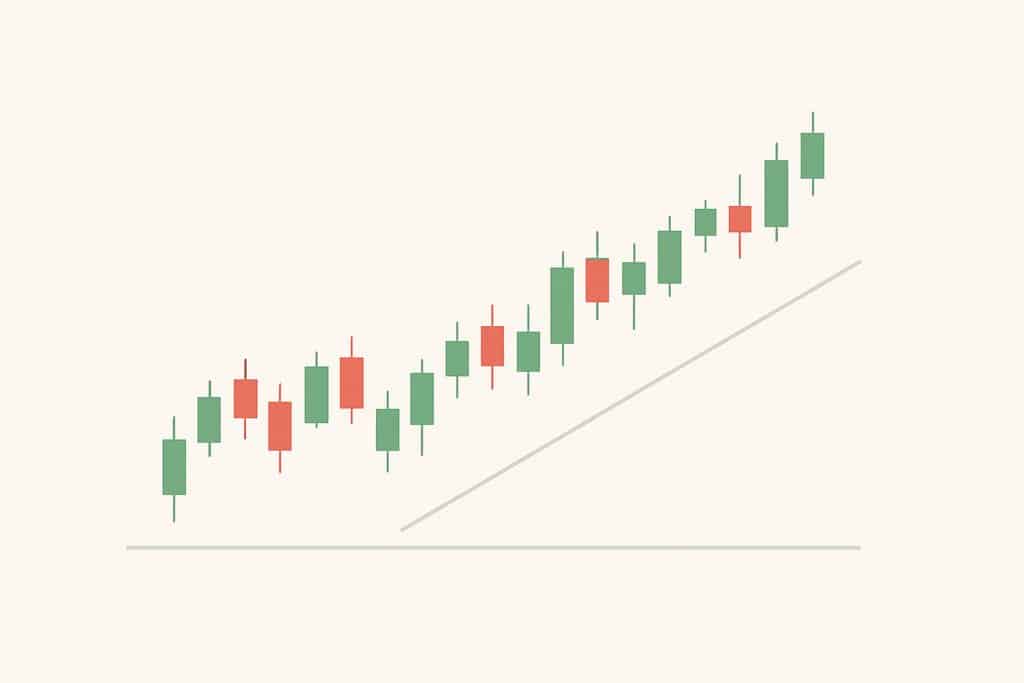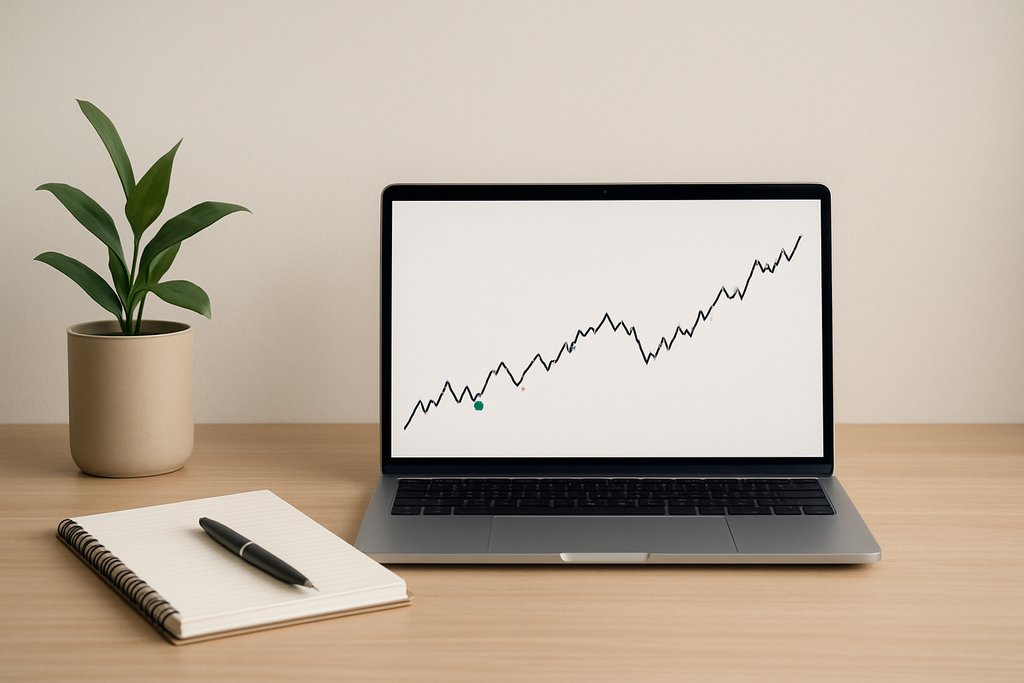Trading for Beginners: Simple Steps to Your First Trades
A practical path to start trading with confidence: set foundations, manage risk, build a simple strategy, and use alerts and automation to execute consistently.

Your first edge is not a secret indicator. It is a clear plan that you can execute with discipline. – Thibaud Sultan
What you’ll learn
- How to set foundations and manage risk from day one
- A simple, testable strategy you can execute consistently
- How to use alerts and automation to remove friction
Table of contents
- What does trading for beginners actually mean?
- Build a strong foundation
- Risk management that protects capital
- Design a simple, testable strategy
- From plan to execution: alerts and automation
- Practical walk-through: first trade
- Benefits and considerations
- A 30‑day plan
- Conclusion and next steps
- FAQ
What does trading for beginners actually mean?
Trading is the act of buying and selling financial instruments over shorter time horizons than long-term investing. Traders seek to profit from price changes in markets like stocks, ETFs, forex, cryptocurrencies, commodities, and indexes. Unlike long-term investors who hold for years, traders think in minutes, hours, days, or weeks, and they care about entries, exits, execution, and risk management.
At the core are a few building blocks. Markets are places where buyers and sellers meet. Prices are influenced by supply and demand, news, and the behavior of other participants. You place orders to enter and exit positions. A market order fills immediately at the current best available price. A limit order sets a maximum price to pay when buying or a minimum price to accept when selling. A stop loss order helps you exit automatically if price moves against you. For a clear primer on order types, see Investopedia: Order Types.
One more concept matters from the start: the bid ask spread. It is the difference between the price at which you can sell (bid) and the price at which you can buy (ask). Wider spreads increase your trading cost. Read Bid-Ask Spread explained for a concise definition.
Trading for beginners: build a strong foundation
When you are new, the temptation is to jump into charts and indicators. A stronger approach is to first set up your environment so that each trade teaches you something valuable instead of adding noise.
Start with your market. Pick one instrument or a small set you can follow consistently, for example a major stock like Apple, a broad index ETF like SPY, EUR/USD in forex, or a large-cap crypto like Bitcoin. More markets do not mean more profits. They often mean scattered attention. If you are choosing software, compare platforms thoughtfully with a focus on execution and reliability.
Define your timeframe and availability. If you can only check markets twice a day, a 15-minute scalping approach will not fit your lifestyle. Many beginners do well with 1-hour or 4-hour charts because they are less noisy than shorter timeframes yet still provide multiple opportunities per week.
Get clear on your platform and execution. You need a charting tool you like, a broker or exchange account to place trades, and a way to set alerts so you do not stare at the screen all day. If you plan to automate parts of your trading later, choose tools that can connect to automation services.
Finally, write down your personal constraints. Your maximum risk per trade, your maximum total risk across open positions, the hours you can trade, and the markets you will ignore. This short note keeps you honest when emotions run high.
Trading for beginners: risk management that protects your capital
If one concept deserves the title of most important for beginners, it is position sizing. Position sizing tells you how much to buy or sell on each trade so that a single mistake cannot wipe out weeks of progress.
Start with a simple rule. Risk a fixed percentage of your account on each trade, often 0.5 percent to 1 percent for new traders. Risk means the amount you would lose if price hits your stop loss. Suppose you have a 5,000 account and you choose to risk 1 percent per trade, that is 50. If you plan a long trade at 100 with a stop at 98, you are risking 2 per share. So you buy 25 shares because 50 divided by 2 equals 25. If the trade fails, you lose 50. If the trade works, target at least 1.5 to 2 times your risk to keep your risk reward profile healthy.
Position size = (Account risk $) / (Entry - Stop)Stop losses are not optional. Place them at a logical level that invalidates your setup, not at an arbitrary round number. If you go long after a breakout, a stop beneath the breakout level or beneath a recent swing low often makes sense. Small controlled losses are the cost of doing business.
Expect slippage and gaps. A stop may fill slightly worse than the exact price if the market moves fast, and some assets can open at a different price after hours. Manage risk with this in mind by giving stops a bit of room and by avoiding oversized positions.
Finally, track your drawdowns. If you lose more than a set threshold, for example 5 percent of your account, reduce size or pause to review. This simple circuit breaker protects your confidence and capital. To explore the math behind risk and reward, see Risk-Reward Ratio.

Trading for beginners: design a simple, testable strategy
A beginner strategy should be simple enough to explain in one paragraph, testable on historical data, and executable without second guessing. Complexity is not your friend at this stage.
Pick one direction filter and one timing tool. For example, moving averages can define trend direction, while the RSI indicator guide helps with timing. Here is a classic starter plan on a 1-hour chart:
- Direction filter: only trade long if price is above the 200-period moving average, and short if price is below it.
- Entry signal: for longs, wait for RSI to pull back below 40 then cross back above 50 while price stays above the 200 MA. For shorts, mirror the logic.
- Stop loss: place the stop below the most recent swing low for longs, above the most recent swing high for shorts.
- Take profit: aim for at least 1.5 times your risk, or trail your stop under higher lows as price advances.
Before risking real money, backtest your idea. Manually scroll through charts and mark trades, or use a tool that can test rules quickly. Record the results over at least 100 trades across different months and market conditions. Focus on metrics like win rate, average win, average loss, maximum drawdown, and profit factor. You are not looking for perfection but for a consistent profile that fits your temperament.
Paper trade next. Run the strategy in a simulated environment for two to four weeks. This step reveals execution friction, late entries, or false signals you did not notice in backtesting. Adjust only one variable at a time when you refine. When you are ready to practice, try a realistic environment with our trading simulator guide.
From plan to execution: alerts and automation that keep you consistent
Many beginners fail not because their idea is terrible, but because they miss signals, chase entries, or forget to place stops. This is where alerts and automation help you stick to the plan.
Obside is a financial automation platform that turns plain language into market actions. You chat with Obside Copilot and describe what you want to do. The platform creates smart alerts, triggers orders, or runs full strategies with your connected brokers and exchanges. Because it reacts to prices, indicators, news, and macro data in real time, your rules translate into consistent behavior even when you are away from the screen.

For more use cases and setup advice, see Trading Automation: From idea to real-time execution.
Here are practical examples you can implement:
- Trade breakouts only during your lunch hour: alert if Bitcoin rises above a level and daily volume doubles, then place a small buy with predefined stop and target.
- Use indicator confluence: notify if RSI crosses 70 on EUR/USD and MACD turns bearish so you can consider a short setup.
- Learn with controlled risk: buy a fixed amount of Bitcoin every Monday at 10:00, a simple DCA, while you practice active trading separately.
- Protect the downside: sell all positions if the S&P 500 drops by 10 percent as a circuit breaker.
With ultra-fast backtesting in Obside, you can validate strategies in seconds before deploying them. For example, test a rule like buy on a bullish RSI divergence on a 15-minute chart with a stop at the low of the day and a 10 percent take profit. You can also stack conditions, such as a Supertrend alignment with a trailing stop sized by ATR.
Practical walk-through: your first trade from idea to execution
Example on a stock
Imagine you are watching Apple on a 1-hour chart. The price is above the 200 MA, so your direction filter is bullish. RSI pulled back to 38 during a minor dip, then crossed above 50 as price reclaimed a recent range high.
You plan your trade. Entry at 185. Stop at 182.50 beneath the last swing low. Risk per share is 2.50. With a 5,000 account and a 1 percent risk rule, you can risk 50 on the trade, which implies 20 shares. Initial take profit at 188.75, which is 1.5 times your risk, while planning to trail the stop under each new higher low if momentum is strong.
You set alerts for the RSI cross and the range reclaim. If you use Obside, you state the rule in plain language, get notified when it happens, and optionally allow the platform to place the order and stops for you. If it advances, you either take profit at target or trail to lock gains. If it fails, you exit at the stop and move on.
Example on Bitcoin
Use a 2-hour chart. Price is above the 200 MA. RSI pulls back below 40, then crosses above 50 while volume rises. Create an alert like “alert me if Bitcoin rises above 65,000 and daily volume doubles.” If it fires, let Obside buy 1,000 dollars of Bitcoin with a fixed stop and a trailing stop if volatility spikes. For cross-market risk, pair with a rule like sell all positions if a 10 percent drop occurs in the S&P 500.
Risk per trade is a small fraction of your account. Compute position size as account risk divided by distance to stop. Keep losses small and consistent.
Benefits and considerations for beginner traders
A structured approach gives you clarity, reduces noise, and helps you learn faster. By defining a simple strategy, sizing positions based on risk, and using alerts to avoid chasing price, you avoid many beginner pitfalls. Automation adds consistency so you do not miss entries during meetings and you do not forget stops.
There are considerations to keep in mind. No strategy wins all the time. Streaks of losses are part of the game and the goal is to keep them small. Overfitting is a common backtesting trap. If you tweak rules until results look perfect, they often fail live. Resist adding too many indicators. Execution matters: spreads, slippage, and fees erode results. Focus on liquid instruments and be mindful of news that creates whipsaw conditions. Protect your mental capital with a sustainable routine.
For a deeper introduction to mindset and behavior, read Trading Psychology.
A 30-day plan for trading for beginners
Week 1: Foundations
Choose one market, one timeframe, and one broker or exchange. Write your risk rules. Study order types and place a few tiny test orders to understand execution flow. Draft your starter strategy on paper, including entries, exits, and stops.
Week 2: Backtest
Scroll through the past six to twelve months on your timeframe, log 50 to 100 trades that fit your rules, and note performance metrics. Do not adjust the strategy mid-test. At the end, decide on one tweak at most. Set alerts for your exact entry conditions so that signals come to you.
Week 3: Paper trade
Execute your plan with simulated capital. Record every trade, including screenshots and a single reason for entry. Translate your rules into plain language in Obside so the platform can trigger alerts and prefill orders with your standard stop and target. Start one simple automation, such as DCA at a fixed time.
Week 4: Go live, small size
Trade with minimal size. Keep risk per trade at 0.5 percent or less. Treat each trade as data. Let automation handle repetitive parts while you focus on review and improvement.
Conclusion: actionable next steps
Trading for beginners becomes manageable once you focus on process, not prediction. Define your market, timeframe, and risk. Pick a simple strategy you can test. Use alerts and automation to enforce discipline. Review and refine with small, controlled risk. If you want help translating rules into action, Obside removes friction from idea to execution.
FAQ: trading for beginners
How much money do I need to start trading?
You can start with a small amount if you size positions using a fixed risk rule. Focus on learning execution and risk management rather than maximizing dollar returns at the beginning. Many brokers allow fractional shares, and crypto venues let you trade small notional sizes. The key is to risk a small percentage, often 0.5 percent to 1 percent per trade.
What is the best market for beginners?
The best market is one you can follow consistently with sufficient liquidity, such as large-cap stocks, major forex pairs like EUR/USD, or large cryptocurrencies like Bitcoin and Ethereum. Liquidity keeps spreads tight and reduces trading costs. Pick one market and master its rhythm before branching out.
Should beginners use automation?
Yes, in a focused way. Automation helps enforce your rules and reduces missed signals. Start with alerts for your entry conditions, then add simple actions like prefilled orders with standard stops and targets. Platforms like Obside let you describe rules in plain language and execute them automatically, which is ideal when you are building discipline.
Which indicators should I start with?
Begin with a minimal set. Use a trend filter like a 200-period moving average and a momentum tool like RSI or MACD. Keep your chart clean and your rules clear. Complexity often hurts beginners more than it helps. If you want to go deeper, start with our technical analysis guide.
Is paper trading worth it?
Absolutely. Paper trading lets you practice your process without financial risk and reveals friction in execution. It is not a perfect substitute for live trading because emotions are lower, but it is a crucial step before risking real capital. Learn how to practice effectively in our paper trading guide.
